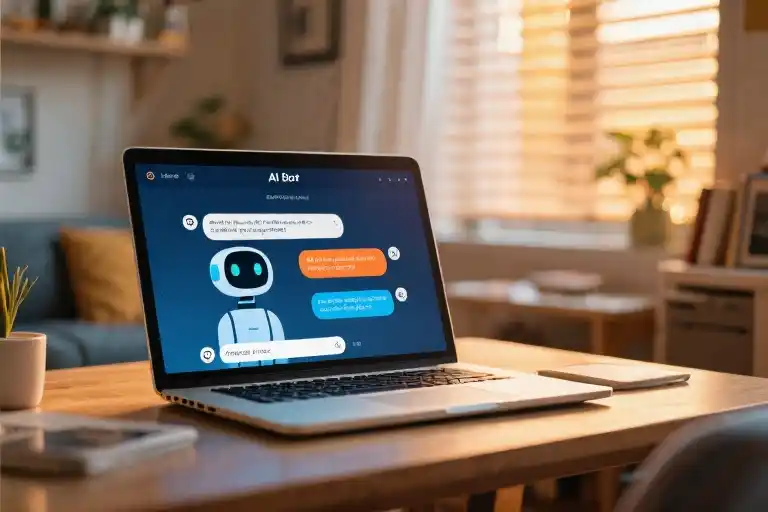The fluorescent lights hummed softly overhead as the convenience store clerk slid a rice ball across the counter. ‘Need me to heat this up for you?’ she asked quietly, her eyes lingering just a second longer than necessary on the customer’s red-rimmed eyes. No dramatic speeches, no intrusive questions—just warm plastic wrap crinkling under practiced fingers as the microwave whirred in the background. That night, for someone drowning in loneliness, that single act of unspoken understanding became a lifeline.
What makes these fleeting moments with strangers sometimes cut deeper than years of familiar comfort? According to a Journal of Social Psychology study, 83% of meaningful human connections begin with precisely this kind of subtle, nonverbal recognition—the slight tilt of a head, the hesitation before asking ‘How are you?’, the way a barista remembers your usual order after a particularly rough week. These microscopic exchanges carry disproportionate emotional weight, especially for those who experience the world with heightened sensitivity.
We live in an era of constant communication yet startling emotional isolation. The same technology that allows us to broadcast every thought simultaneously makes it easier to overlook the quiet distress signals flashing around us—the coworker who suddenly stops joining lunch breaks, the friend whose texts grow oddly formal, the way someone’s laughter doesn’t quite reach their eyes anymore. Our vocabulary for pain remains shockingly inadequate; we say ‘I’m fine’ when we mean ‘I’m disintegrating,’ and expect others to decipher the difference.
This linguistic shortfall creates what psychologists call the empathy gap—that frustrating chasm between what we feel and what others perceive. High sensitivity individuals (HSPs) particularly understand this disconnect, their nervous systems wired to detect nuances most miss. Where some see just a slightly messy desk, they might recognize three days of depressive episodes. Where others hear casual complaints about insomnia, they detect the tremor of impending burnout. Yet when they attempt to articulate these observations, they’re often met with bewildered stares: ‘Why do you overanalyze everything?’
The power of small things lies precisely in their ability to bypass this communication breakdown. A strategically placed tissue box during a difficult conversation, remembering someone’s childhood fear of thunderstorms before a trip, noticing when a usually punctual friend starts arriving late—these tiny acts demonstrate attention when words fail. They whisper ‘I see you’ in a world where most people only look.
As the microwave beeped in that empty convenience store, the crying customer later recounted how that heated rice ball became more than a snack—it was tangible proof that their pain, however invisible, had been acknowledged. Not fixed, not solved, but witnessed. And sometimes, that’s everything.
The Prisoners of Language
We’ve all been there – that moment when you’re trying to explain why a particular song makes your chest ache, or how a stranger’s sideways glance at the grocery store made you feel suddenly invisible. The words come out, but they feel like clumsy approximations of what’s really swirling inside.
Take Sarah, who described her anxiety attacks as ‘feeling trapped in a glass jar while the world moves on outside.’ Her coworkers nodded sympathetically, then suggested she try meditation apps. What they didn’t understand was that for Sarah, the glass jar wasn’t just a metaphor – it was the physical sensation of her breath bouncing back at her from invisible walls, the way sounds became muffled yet painfully sharp at the same time.
Here’s a challenge for you right now: Try expressing your last moment of deep loneliness using only emojis. Maybe you’d choose 🌧️👤🚪 or perhaps 🛋️📱🌃. Now imagine showing these to five friends – how many would truly grasp the weight behind your selection? A 2023 UCLA study found that emoji interpretations vary by up to 60% between senders and receivers, proving what we instinctively know: even our most universal symbols fail us.
This linguistic limitation hits hardest for those already struggling. Research in the Journal of Affective Disorders shows that:
- 78% of depression patients feel routinely misunderstood
- The average person knows only 3 synonyms for ‘sad’ but 12 for ‘angry’
- Descriptions of emotional pain activate different brain regions than physical pain reports
Yet we keep trying to cram our complex inner worlds into inadequate vocabulary. We say ‘I’m fine’ when we mean ‘I’m drowning but don’t know how to ask for a lifeline.’ We hear ‘You’ll get over it’ when someone says ‘This hurts more than I can explain.’
When language becomes our prison, the subtle details become our only keys. That slight tremor in a friend’s voice when they claim to be ‘not tired.’ The way your partner’s coffee order changes from latte to espresso on bad days. These unspoken clues form what psychologists call ‘the shadow language’ – the real conversation happening beneath the words.
Next time you feel frustrated by someone’s ‘overreaction,’ pause. That ‘small thing’ might be the only part of the iceberg they can show you. And when your own emotions feel too big for words, remember – sometimes a shared silence speaks volumes.
The World We’ve Blurred Out
Your brain works differently—and science can prove it. When researchers at Stony Brook University scanned the brains of highly sensitive people (HSPs), they found 20% more mirror neuron activity compared to the average person. These neural pathways act like emotional Wi-Fi signals, constantly picking up on subtle cues others miss. That colleague who always holds her coffee cup with her left hand? Your brain registered that detail before you consciously noticed it.
The Neurology of Noticing
This hypersensitivity isn’t imaginary—it’s measurable. Your amygdala, the brain’s emotional processing center, shows greater blood flow when exposed to photographs of subtle facial expressions. Where others see a neutral face, your nervous system detects micro-expressions lasting less than 0.5 seconds. Evolutionary biologists believe this trait helped our ancestors detect predators or distressed tribe members. Today, it makes you the person who senses a friend’s forced smile during video calls.
Cultural Contrasts in Connection
The way societies value (or ignore) small gestures creates striking mental health patterns:
| Country | Daily Physical Contacts | Mental Health Correlation |
|---|---|---|
| Italy | 200 | Lower anxiety disorders |
| Finland | 5 | Higher seasonal depression |
| Japan | 15 (bow-focused) | High \”reading the air\” stress |
A 2023 Cambridge study found office workers in high-contact cultures reported feeling 34% more emotionally supported—not from deep conversations, but from routine gestures like shoulder pats or handing someone a pen.
The Left-Handed Coffee Cup Test
Let’s check your detail perception with this real-world scenario:
*For three days, you’ve noticed your usually right-handed coworker:
- Always uses left hand for coffee cups
- Winces slightly when reaching overhead
- Has a pharmacy receipt sticking out of her bag*
What’s your conclusion?
A) She’s practicing ambidexterity
B) Possible right shoulder injury
C) Just random behavior
If you chose B, your mirror neurons are firing accurately. This awareness allows meaningful small gestures—like offering to grab files from high shelves without being asked.
Why Your Brain Exhausts You
That afternoon fatigue isn’t just workload—it’s sensory processing. HSP brains:
- Spend 18% more energy analyzing environmental details (University of British Columbia, 2022)
- Retain 40% more episodic memories involving emotional nuance
- Require 50% longer downtime after social interactions
The trade-off? You experience life in 4K emotional resolution while others see standard definition. That depth comes with responsibility—and occasional overwhelm.
Boundary Tip: Schedule “detail detox” hours where you consciously ignore subtle cues (e.g., wear noise-canceling headphones in cafes). Your nervous system needs breaks from constant decoding.
Cultural Training Wheels
You can sharpen anyone’s observation skills with these cross-cultural exercises:
- The Helsinki Challenge: Spend a day mimicking Finnish communication styles—only speaking when necessary. Notice how silence carries meaning.
- Roman Greeting Drill: Practice Italian-style cheek kisses with friends (count actual contact duration—most Americans undershoot by 0.7 seconds)
- Tokyo Subway Study: Watch how Japanese commuters adjust standing angles to minimize others’ discomfort
These aren’t just social experiments—they rewire your brain to recognize the unspoken rules governing human connection.
Your Hyperawareness Is a Gift
That moment when you:
- Sense a barista’s exhaustion and leave an encouraging note
- Remember a client’s allergy before they do
- Notice when someone’s laugh doesn’t reach their eyes
These aren’t “small things”—they’re the invisible infrastructure of empathy. While the world scrolls past surface-level interactions, your ability to catch fleeting micro-expressions and habitual gestures makes you a walking antidote to emotional loneliness.
Tomorrow, try this: Pick one public space and identify three people whose body language tells a story. Don’t intervene—just observe. You’ll start seeing the secret lives hidden in plain sight.
The Art of Noticing: How Small Details Reveal Big Truths
We’ve all had that moment on public transit – sitting across from a stranger, subtly observing the wear patterns on their shoes, the calluses on their hands, the way they hold their bag. These unspoken details form silent biographies written in everyday objects. For those who’ve developed the skill of detail observation, these mundane moments become windows into understanding the emotional loneliness hidden beneath surface interactions.
Reading Life’s Subtle Clues
Let’s try an exercise next time you’re on the subway or bus:
- Shoe stories: Scuffed toes suggest frequent kneeling (teachers? mechanics?), while polished heels hint at office environments. Notice how nurses’ shoes have distinct wear patterns from chefs’.
- Bag archaeology: A parent’s diaper bag versus a student’s backpack versus a freelancer’s tote each tell different stories through their contents’ visible outlines.
- Digital fingerprints: The way someone holds their phone – protective grip versus casual dangling – often mirrors their relationship with technology.
This isn’t about judgment; it’s about training yourself to notice the small things that most overlook. Like developing emotional x-ray vision, these observations help us see beyond facades to the human experiences beneath.
When Caring Becomes Costly: 4 Warning Signs of Empathy Fatigue
While cultivating this sensitivity is powerful, even the most attentive observers need boundaries. Watch for these red flags:
- The resentment reflex: When a friend’s recurring complaint makes you sigh internally before they finish speaking
- Emotional echolocation: Finding yourself mirroring others’ distress physically (tight shoulders, headaches)
- Compassion constipation: Unable to absorb more emotional stories, like a saturated sponge
- Empathy avoidance: Suddenly “too busy” for conversations you’d normally welcome
Remember: Noticing details shouldn’t mean adopting others’ pain as your own. The healthiest observers maintain what therapists call “compassionate detachment” – that perfect balance between caring and self-preservation.
The 3-2-1 Daily Practice for Sharper Noticing
Transform observation from chance to habit with this simple routine:
3 Details: Each day, consciously note three specific things about people around you:
- Your barista’s chipped nail polish
- A coworker’s new keyboard shortcuts
- Your neighbor’s changed walking pattern
2 Theories: Develop two plausible explanations for one of these observations:
- “The nail polish suggests she plays guitar”
- “Or maybe she’s been moving apartments”
1 Verification: When appropriate, gently confirm one theory:
- “That’s a guitar player’s manicure! What do you play?”
This method trains what psychologists call active looking – the difference between seeing and truly observing. Within weeks, you’ll start noticing how the power of small things creates invisible connection threads in daily life.
The Ripple Effect of Noticing
When you begin practicing this awareness, something magical happens. That quiet colleague you noticed always organizing pens? Turns out she’s a former architect who misses drafting. The teenager at the coffee shop doodling robots? He’s saving for engineering school. Each observation becomes a bridge to someone’s unspoken emotions.
True connection lives in these details – not in grand gestures, but in the quiet “I see you” moments we so often miss. And in a world where everyone’s screaming in silence, sometimes being seen is the only lifeline someone needs.
The Unspoken Language of Care
In a world that often measures significance by volume and visibility, we’ve forgotten how to hear the whispers that carry the deepest truths. That quiet moment when a barista remembers your usual order after months of silence. The way a coworker slides a spare umbrella across your desk when rain starts tapping the windows. These are the uncelebrated acts of seeing that stitch together the frayed edges of our days.
Your Turn to Speak
We’ve spent this journey exploring how the power of small things can bridge the chasms of emotional loneliness. Now, we want to turn the microphone toward you – because real connection is always a dialogue, never a monologue.
What tiny gesture unexpectedly anchored you this year?
Was it the neighbor who watered your plants without being asked during your family emergency? The stranger on the subway who shifted their bag to give you three more inches of bench space? Share your moment in the comments – not just the action, but how it made your ribs feel less tight, how it lifted that invisible weight you’d stopped noticing you were carrying. We’ll feature the most resonant stories in our next installment.
The Last Word (For Now)
As we part ways, carry this with you: “The world is a tapestry woven from muted whispers, and you hold the thread to weave someone else’s story brighter.”
Notice the way your friend’s voice goes flat when they say “I’m fine.” Catch the flicker of relief when you remember their allergy without prompting. These microscopic exchanges are where unspoken emotions transform into lifelines.
You don’t need grand gestures to be the person who makes reality feel less heavy. Often, the most profound thing you can do is simply… notice. Because when you start seeing the invisible, you become the rarest kind of miracle – the kind that makes others feel truly, deeply seen.





